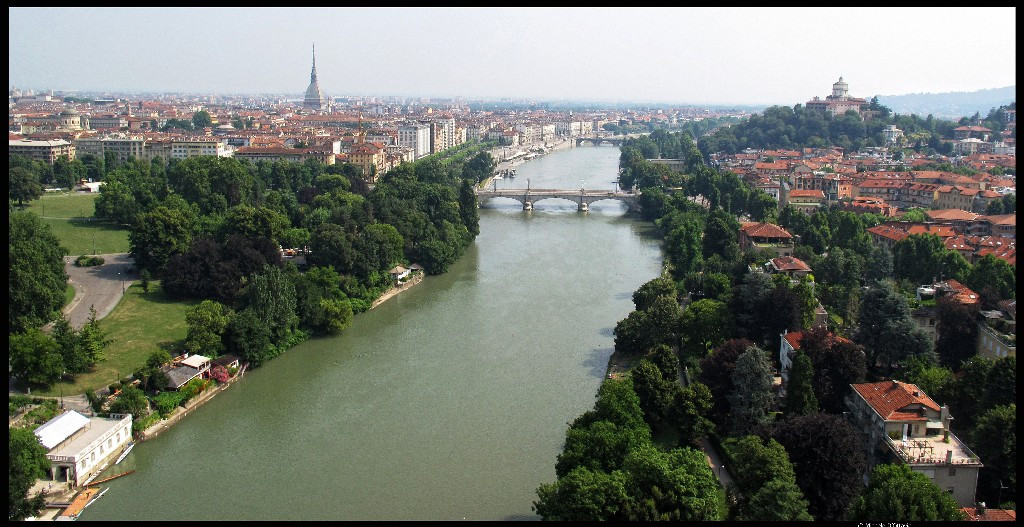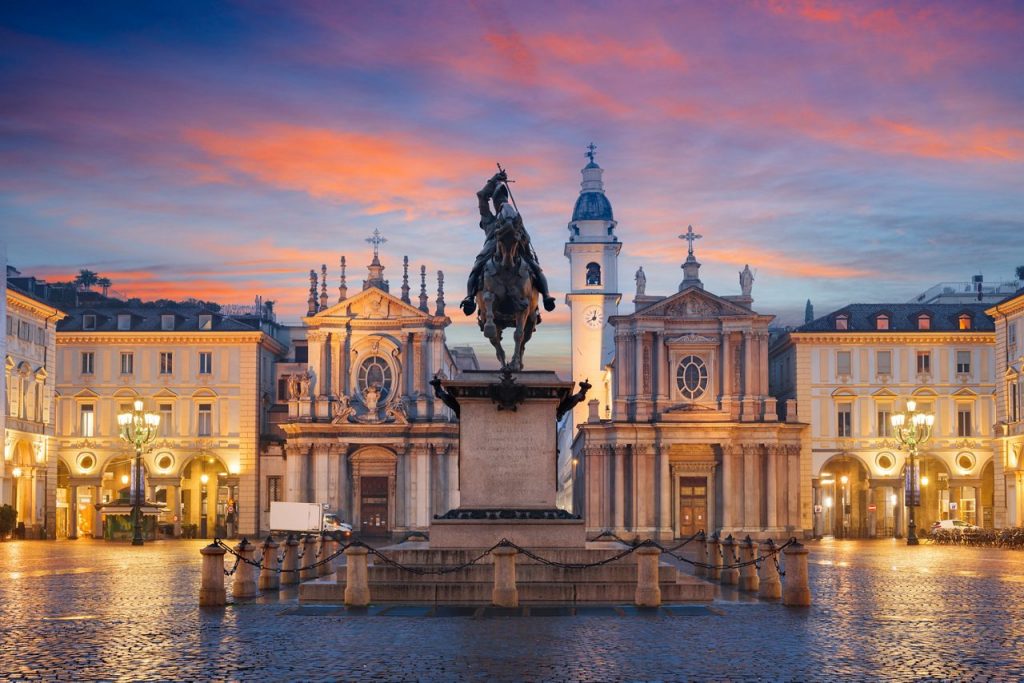
When Hannibal’s army and elephants, having crossed the Alps in 218 B.C., arrived on the banks of the Po River, the settlement of the taurisci, or taurini, was but a village. Two more centuries had to pass before Augusta Taurinorum, founded in 28 B.C., could boast the title of city. All that remains of that fortified rectangle in today’s Turin are the walls, the towers of Porta Palatina and the ruins of the theater, crowning the entrance to the Museum of Antiquities.
At the beginning of the 18th century, the fortification of the city having been completed, Filippo Juvarra, with the new military quarters to the west, Porta Palazzo to the north, and other interventions in the historic heart of the center completed the urban plan that finally gave Turin an image worthy of competing with other European capitals. The Napoleonic era brought with it the demolition of the city walls and the opening of large avenues of external circulation, new bridges and plans for further expansion, legacies reinterpreted during the Restoration with the construction of the large squares (Piazza Vittorio Veneto, Piazza della Repubblica, Piazza Carlo Felice) and the establishment of the neoclassical borgo Nuovo.
The expansion of the city in the western sector of Corso Vittorio Emanuele II characterizes the second half of the 19th century: the rearrangement of the Porta Nuova railway station, and the creation of the Porta Susa railway station, the construction of large service facilities, from the New Prisons (1862-70) to the railway workshops (1884). The 1908 land-use plan defines middle-class and industrial development: while in the historic center, redevelopments intended to house the representative offices of banks and corporate administrations were initiated, workers’ suburbs, the so-called ‘barriers’, were formed along the old expansion routes. The 1959 master plan legitimizes the structure as a city of industry.
The new goals today are the redevelopment of urban spaces and the conversion to tertiary and services of areas and structures freed from manufacturing activities, and in the decade at the turn of the millennium Turin has witnessed an extraordinary season of change, in many ways similar to that which, over the centuries, has characterized the evolution of its image as a city.
Visit Torino

To discover the city and what it has to offer, TORINO TURISMO website is the right choice
